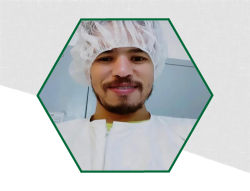Multi-layer TiO2/SiO2 films are frequently used as anti-reflection coatings (ARCs) due to their excellent optical properties. We report CO2 laser-assisted deposition, i.e., spin-coating of wet-films followed by laser processing, of multi-layer transparent films using a mixture of TiO2 and SiO2 nanoparticles. A simple heat transfer model is presented to select proper laser processing parameters. To minimize the reflectance, and enhance the transmittance, an ARC model is utilized to select the film material and the thickness of each layer. UV/Vis spectrophotometry was carried out to measure the optical reflectance. UV/Vis/NIR spectrophotometry shows that the sintered homogenous films are highly transparent, with an average transmittance of above 90% in a certain wavelength range. Due to the films porosity, an effective medium model was utilized to determine the optical constants, i.e., the refraction index (𝑛𝑐) and the absorption index (𝑘𝑐), of just the solid phase which is formed by the sintered nanoparticles in the nanocomposite TiO2/SiO2 films. The results demonstrate that the effective refraction or absorption index can be smaller than that of the solid phase. This trend indicates that nanocomposite thin films of arbitrary optical properties can be deposited using nanoparticles by varying the porosity, since the film consists of both solid phase and pores. The effect of TiO2 and SiO2 nanoparticles concentrations on the optical properties of multi-layer films is also investigated. The film roughness was examined by measuring the thickness with an optical profilometer. The effect of laser processing on the microstructural properties was investigated using SEM and XRD techniques.
Keywords
- Laser Sintering
- Nanoparticles
- Optical Properties
- Refraction Index
- Transmittance

